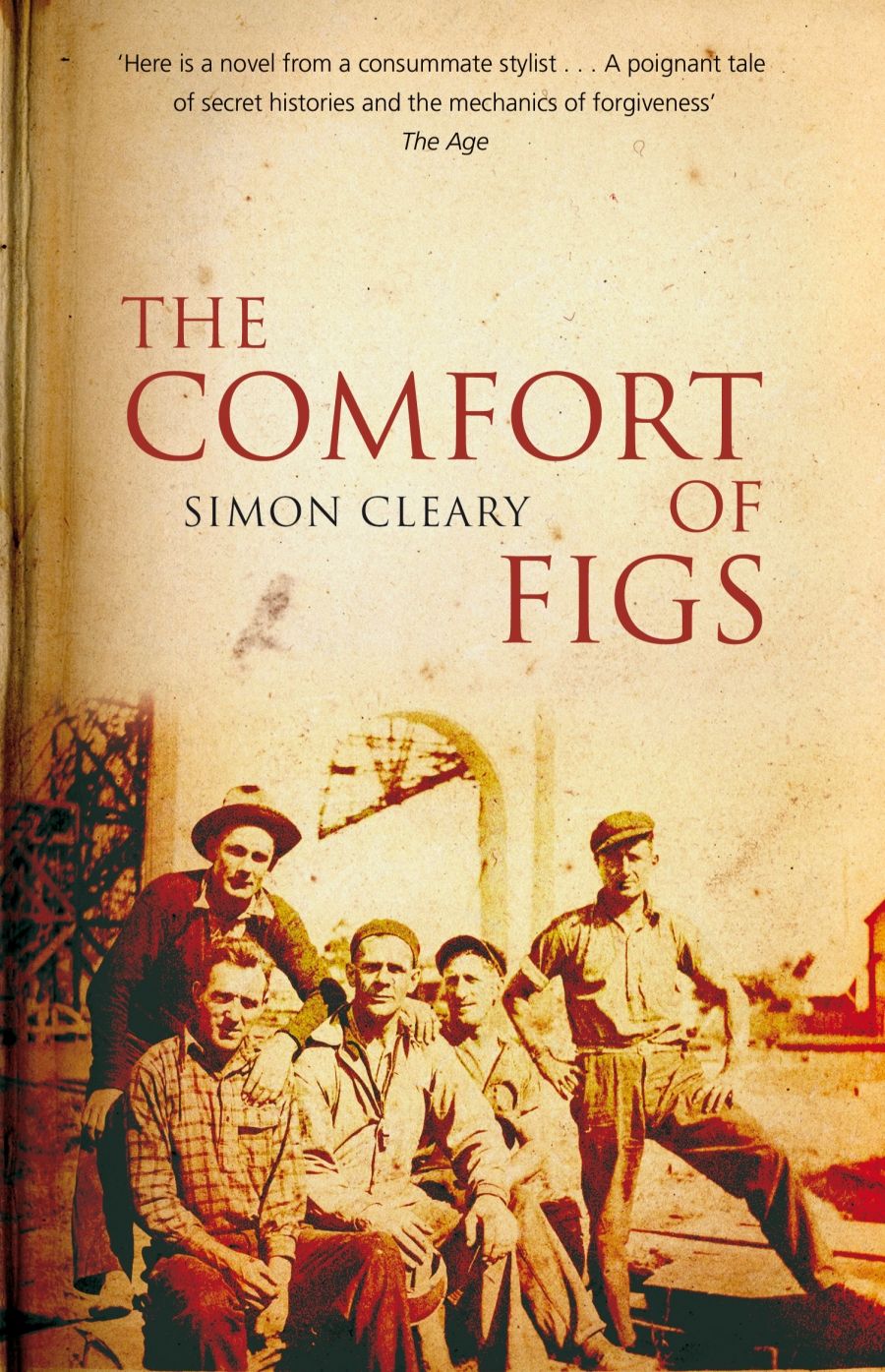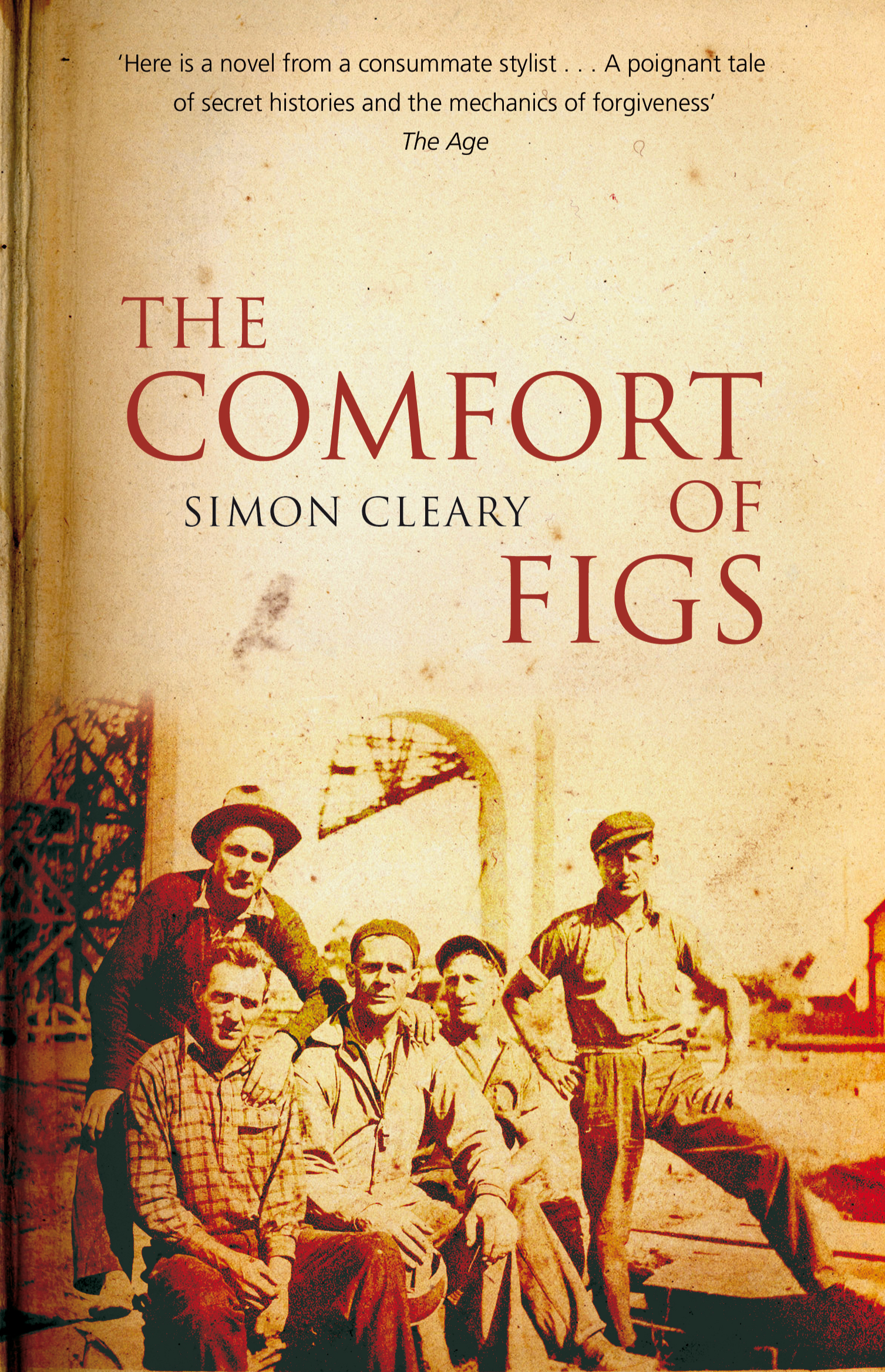
- Free Article: No
- Custom Article Title: Two Cultures Revisited
- Review Article: Yes
- Article Title: Two Cultures Revisited
- Online Only: No
- Custom Highlight Text:
In 2005 Simon Cleary was shortlisted for the Queensland Premier’s Award for the best manuscript of an emerging Queensland author, and here it is, every bit as fresh and lyrical as the report promised. It is one of those novels that works by close-up focus on substantiating detail, leaving the main contours of the plot to emerge as they will; like a bridge, perhaps, calling attention to its line and form and even its usefulness. It takes a more careful eye to appreciate the development and assembly and the structural stresses – its very strength.
- Book 1 Title: The Comfort of Figs
- Book 1 Biblio: UQP, $32.95 pb, 334 pp
- Book 1 Cover Small (400 x 600):

- Book 1 Cover (800 x 1200):

Bridges are meant to connect. They change the landscape: they link disparate regions, opposing banks and create a larger entity. Or so it is said, though there’s plenty of evidence that the splice does not happen. Think of ongoing resistance from the Left Bank, hostility to the North Shore, reclamation of the South Side.
The Comfort of Figs spans generations (these metaphors are inescapable, though Cleary avoids making them explicit). An engineer, once a steelworker on the Story Bridge in Brisbane, and inordinately proud of his part in building that iconic structure, has alienated his son Robbie by endlessly ramming the fact down his son’s throat. Reminiscence hasn’t softened the detail; it has sustained his monstrous egotism. By way of opposition to the father he all but hates, Robbie does Arts instead of Engineering at University (that will fix him!) and worse, doesn't complete his degree but works in the city council's Parks Department, planting things, trying to compensate for the kinds of activity his father stands for, trying indeed to find ways of obliterating him. Like an antipodean Johnny Appleseed, he is planting fig trees, mostly Moreton Bay figs, all across Brisbane. It's the Two Cultures revisited.
One of the things Cleary does very well is describe the natural world of Brisbane: the trees, of course; the birds; the shape of the terrain. We are led to feel the corrugations in the bark, the great smooth curves of the heavy branches, the different textures of the two sides of the fig-tree leaves. We learn the extraordinary sequence by which fig trees are pollinated. We all but see how these trees eat up the light. We get to know just about everything about them. Fig trees support this novel as eucalypts did Murray Bail’s.
Fig trees do not flower. The relationship between Robbie and his ecological warrior girlfriend is built upon the pattern of her discovering, through him, something of their meaning. He even stitches together a blanket of fig leaves for her (vaguely reminiscent, as a gesture, of the canopy of for bees in Malouf’s Remembering Babylon gesture 1993), but by this stage she has begun to collapse in on herself, distraught as she waits the outcome of an assault with a hypodermic needle. What she needs is human comfort, not these ritual gestures. And Robbie has not been able to give that to her, as he has become absorbed in learning the details of his father's earlier life.
This is the bit I'm not to give away. The novel is constructed like the two leading edges of the bridge approaching each other on two different timelines; and the father’s story has to do with when the joining span is dropped into place. We get some sense of what it might have been like to be a workman on the bridge; happily, Cleary avoids the usual narrative rituals of mateship and so on. There is distrust of the bosses, of course, but even more understandable anxieties about what might happen if you fell off the bridge.
Robbie’s father is a bit of a worry: a loner but also a natural leader. Maybe that is the same as saying a bully. We find out very little of him from the inside. Robbie, likewise is a loner and ultimately absorbed in his struggle against his father. The antagonism comes all from his side. He has failed to reach out to his partner when she needed him; and his strategy of planting strangler figs in the crooks of camphor laurels is in its own way just as callous, as wilfully brutal as anything he could lay against his father. He is more like him than it would be comfortable for him to know.
There is a final scene, wonderfully ambiguous, a gift of the cruellest kind, a gesture of death as well as of connection, which leaves us all where we started, suspended. You will have to find out for yourselves. Bridges are for troubled waters to pass under, but that hasn't happened here. Still, Cleary is well under way with his next novel, and that is something else to look forward to.


Comments powered by CComment